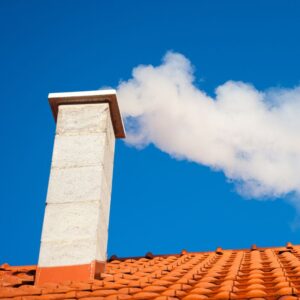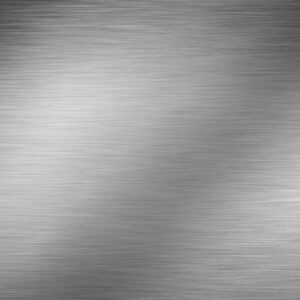Did you know that poorly-maintained flues and chimneys are actually one of the most common causes of home fires? Despite being such an important part of your chimney system, though, it’s not uncommon for homeowners to ask us, “What is a chimney liner?”
Just as the name implies, a chimney liner is simply a lining that goes in the flue of the chimney. However, don’t mistake simple as insignificant. In fact, past studies have shown that chimneys without a liner can quickly become unsafe to use, increasing the risk of chimney and home fires.
Even now, most building codes actually require chimneys to be lined as an extra safety measure! Do you need chimney relining services? Reach out today. Highpoint Chimney is here to help.
The Function of a Chimney Liner
 Chimney liners create a clear and direct path for smoke and other fumes to exit your home. Without one in place, the chimney walls will eventually deteriorate, allowing potentially hazardous toxins, like carbon monoxide, the opportunity to seep through any cracks and into your living space.
Chimney liners create a clear and direct path for smoke and other fumes to exit your home. Without one in place, the chimney walls will eventually deteriorate, allowing potentially hazardous toxins, like carbon monoxide, the opportunity to seep through any cracks and into your living space.
Not to mention, when a chimney isn’t able to effectively release smoke outside like it’s supposed to, this can cause excessive creosote buildup – and that’s when your chances of experiencing a chimney fire greatly increase.
Highpoint Chimney Services strongly advises that every homeowner invest in a chimney liner – and we would be happy to help you with that.
How Do I Know If My Chimney Needs a New Liner?
The problem with chimney liners in most homes is that they were originally constructed with clay or some type of ceramic material. This is because it is relatively inexpensive, and it works fairly well if your chimney is properly maintained.
However, clay liners are not exactly the most durable. They crack and erode under extreme weather changes and conditions, and we all know how unpredictable the weather is here in Central New Jersey.
It might be time to consider having a new chimney liner installed if you notice any of the following:
- Visible Damage: Do you notice any cracks or visible gaps in the existing liner?
- Excessive Creosote Buildup: Creosote is a black, sticky substance that often lines the chimney. If you notice it is consistently accumulating in thick layers, even while staying on top of regular chimney sweeps, this can be a clear indication that a new liner is necessary.
- Chimney Fires: The excessive heat from a chimney fire can damage the liner and compromise the structural integrity of your chimney.
- Flue Sizing Issues: Have you recently installed a larger appliance or converted to a different fuel type for your fireplace? Your current liner may no longer be compatible and will need to be replaced to ensure efficient ventilation.
- Odors or Smoke Issues: Noticing odors or smoke inside of your home while using your fireplace is a pretty good indication that there is a problem somewhere in your chimney. This can be due to a number of reasons but should be looked at by a certified chimney technician as soon as possible.
- Age or Deterioration: When was the last time your chimney was relined? Depending on the type of chimney liner you have, it may last anywhere from 20 years to even 50 years – knowing where you stand is important.
According to the Chimney Safety Institute of America (CSIA), it’s good to have your chimney inspected at least once a year, so that you can keep on top of regular maintenance and ensure each component, like your chimney liner, is in good working order.
What Are the Different Types of Chimney Liners?
There are currently two types of chimney relining methods we work with.
 Stainless Steel Liners: Benefit from the swift installation of our stainless steel liners, ensuring a lifetime of protection when professionally installed and regularly maintained. These liners boast corrosion resistance and exceptional durability, and they provide a superior level of safety compared to less robust alternatives.
Stainless Steel Liners: Benefit from the swift installation of our stainless steel liners, ensuring a lifetime of protection when professionally installed and regularly maintained. These liners boast corrosion resistance and exceptional durability, and they provide a superior level of safety compared to less robust alternatives.- HeatShield®: With HeatShield®, there are three relining methods, all offering a more cost-effective alternative to a complete stainless steel liner replacement. While it may not be suitable for everyone, discussing your options with us will guide you toward the best solution for your needs.
Unsure about which liner suits you best? Our team is ready to assist in helping you make the right choice for your chimney.
Call Highpoint Chimney Services for Chimney Repair & Relining Services
If you are unsure about your chimney liner, or if you have more questions, give Highpoint Chimney Services a call today. We can help you better understand your options based on your specific needs, and get you on the schedule for chimney repair and relining work as soon as possible.
You can reach us at 908-864-4114 or schedule an appointment directly on our website.

Recent Comments